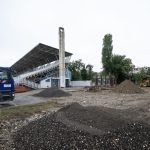After the tragedy in Genoa, questions are being asked about the safety of Zagreb bridges.
After the recent collapse of a bridge in Genoa, Italy, many have started wondering whether the bridges in Croatia are safe. The answer is more worrying that you might have thought, especially when it comes to the bridges in the Croatian capital, reports Večernji List on August 17, 2018.
Most Slobode (Freedom Bridge), the central bridge over the Sava river, is in the worst shape. It has been falling apart for years. Concrete blocks are falling down, the fence is broken, and pools of water gather in holes in the pavement. This January, the city authorities decided that the bridge will undergo major reconstruction and a tender was announced. It was said that, if everything went well, the works would start this spring and last for five months.
However, it seems that not everything went well since the works have not yet started and are not about to start anytime soon. The tender itself was concluded successfully, which makes the delay even more bizarre. Two bidders applied to the tender, but one was disqualified for not fulfilling the tender conditions. The remaining bidder, a joint bid by Spegra and Spegra Inženjering, was given until 5 September to confirm it is still interested to work on the project despite delays, which means that the reconstruction works could end next spring at the earliest, at least in theory.
But, as usual, the delay will be much longer. The bridge will be left as it is since in November works at the major roundabout on the other side of the river will begin, and it is impossible to simultaneously close down two such important traffic links.
“It was not exactly best planned,” admit the city authorities, which declined to provide an official explanation. On the other hand, Assistant Construction Minister Željko Uhlir said that the inspection services surveyed Most Slobode two years ago, and at the time issued a request for the maintenance works.
“Any delay brings even greater damage. Bridges should stay safe for a hundred years, but only if they are monitored and maintained regularly. In Zagreb, the problem is precisely that bridges are not systematically monitored,” said Uhlir, who pointed out that the youngest bridge in the capital was constructed in 1970. He added that the price of 19 million kuna shows that the works on the bridge will have to be substantial.
The easternmost of the three main bridged, Most Mladost (Youth Bridge), is in a similarly bad shape. In April, the authorities said that its reconstruction depended on available funds. “The project documentation for the renovation of Most Mladosti – the southwest access roadway – has been completed and public procurement procedures will be initiated to select the contractor in accordance with the secured financial means,” said the city.
The westernmost bridge, Jadranski Most (Adriatic Bridge), will allegedly be reconstructed when the works on the nearby roundabout are completed, which means they will not start for at last two years.
Translated from Večernji List (reported by Mateja Šobak).










